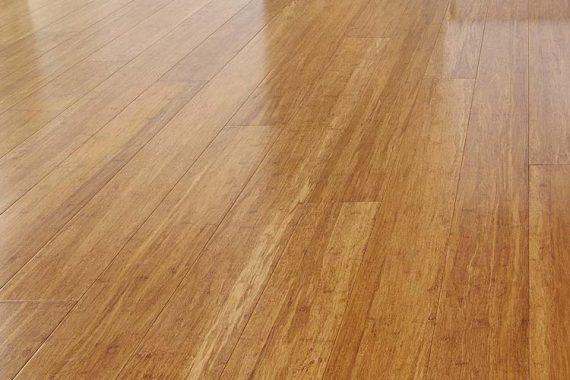Can Bamboo Floors Be Refinished?
If you have bamboo floors at home, you may be wondering if you can refinish this style flooring. The answer is yes, you can refinish bamboo flooring! However, the refinishing process will depend on the type of bamboo flooring you have in your home.
Can You Refinish Bamboo Flooring?
Bamboo flooring is very similar to wood flooring in both look and function. So yes, you can refinish bamboo floors the same way you would refinish any type of hardwood flooring. With that being said, there are a few different types of bamboo flooring, all with different refinishing considerations.
The three main types of bamboo flooring are as follows:
- Vertical bamboo flooring
- Horizontal bamboo flooring
- Strand-Woven bamboo flooring
How To Refinish Bamboo Flooring
Before starting this process, you will need the following supplies:
- Vacuum
- Pad sander
- Floor buffer
- Plastic sheeting
- Respirator
- Sandpaper
- Polyurethane sealer
- Polyurethane floor finish
- Ruler
- 120-grit sanding screen
- Flooring edger
- Tack cloth
Step 1. Evaluate Wear Layer
First, you must be certain that the top layer is thick enough to remain intact if you are attempting to sand engineer bamboo flooring. Floors that haven’t been refinished usually feature a thick-enough layer to sand. However, if the floor has been sanded previously, then remove a door threshold so you can see the cross-section of the flooring. Measure the wear layer using a ruler, then proceed as long as it’s more than 2-millimeters in thickness.
Step 2. Get The Proper Protection
Make sure to completely isolate the room you are working on from the rest of the home. Cover the doors and intake air vents with a plastic sheet, while also turning off the central air system until a day or so after the project has been completed. Open your windows to provide some ventilation and wear a respirator while sanding.
Step 3. Cut The Surface
Remove all the baseboards and place a flooring drum sander with 60-grit paper and sand slightly angled at the bamboo grain. Do this at a 7-to-15-degree angle, if possible. By not going directly with the grain, you can reduce the chances of raising splinters. Use a flooring edger with the same paper grit to then sand the edges.
Step 4. Make Two Finish Passes
Next, change the paper on the drum sander and edger to 80 grit for the second pass. Change it to 100 grit for the third one. The purpose of these passes is to remove scratches from the flooring and prepare it for finishing. The recommendation is to run the drum sander straight along the grain. Follow each pass by sanding the floor edges with the same sandpaper grit as the drum sander. Vacuum the flooring between each pass.
Step 5. Clean The Area
Thoroughly vacuum the flooring after the final pass, then wipe it down with a tack cloth. Check for any splinters while wiping. Let the floor dry completely after tacking.
Step 6. Apply Sealer And Two Finish Coats
The majority of DIY floor-finishing products are water-based polyurethane. The sealer used to provide a smooth undercoat, is simply a high-solids version of the finish material. Next, apply a coat of sealer with a paint pad. Sand the sealer with a floor buffer and a 120-grit sanding screen followed by two coats of finish. Use the buffer to sand the first coat prior to applying the second coat.
Urban Customs Installs Hardwood Flooring In Phoenix, Arizona
At Urban Customs we offer all types of flooring installation in Phoenix, Arizona, including Wood flooring, stone flooring, and bamboo flooring. Request a free flooring installation quote from Urban Customs today! Our address is 8050 N 19th Ave #127, Phoenix, AZ 85021.


